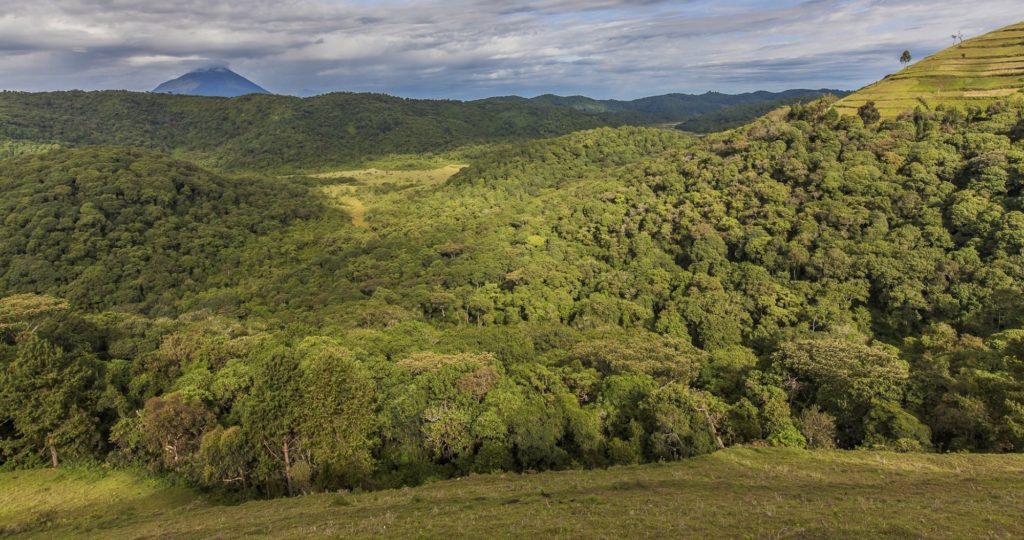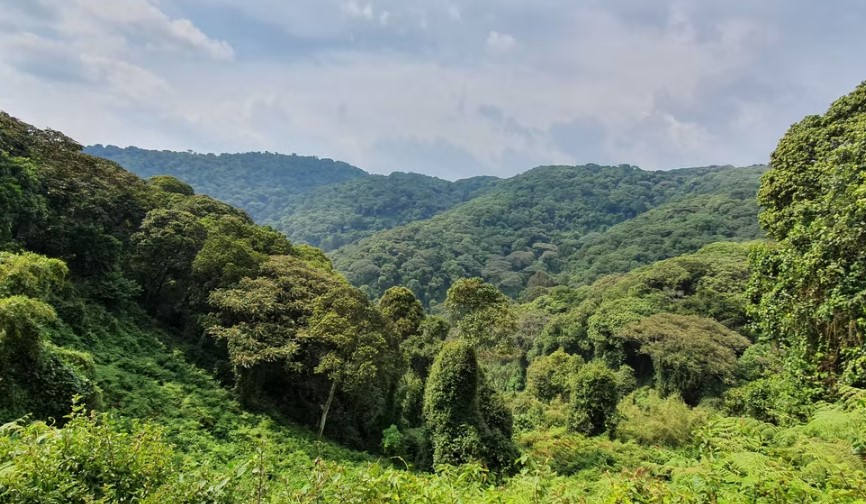Echuya Forest Reserve, History, Attractions, location and things to do.
Echuya Forest Reserve is situated in a densely populated region where the majority of inhabitants rely on agriculture. Its prolonged existence has primarily relied on the assistance of the surrounding community. This forest reserve has an area of 35 square kilometers situated between Kisoro and Lake Bunyonyi. This area is the least frequented by guests on Uganda safaris, ensuring true wilderness experiences.
Echuya Forest has an extensive highland ecosystem that includes evergreen forests and bamboo. It has a high-altitude marsh, known as Muchuya, which is recognized as one of the premier locations to observe 30 to 50 pairs of the endangered Grauer’s swamp warblers. The Echuya woodland is classified as one of the Important Bird Areas in Uganda. It has an estimated population of approximately 153 bird species, 18 of which are endemic. It also functioned as a residence for the Batwa pygmies, who engaged in hunting small animals and foraging for fruits and fuel.

Vegetation
Echuya is characterized by dominance of bamboo, specifically Sinarundinaria alpina, with less dense areas featuring woody and herbaceous flora. A total of 20 tree species have been documented in the entire forest. The majority of tree species are early pioneers or ‘secondary’ species, as well as late ‘secondary’ species, indicating that Echuya is a secondary forest. Macaranga capensis constitutes 65% of the forest cover, making it the predominant tree species. Seventy-two species of herbs and forty-six kinds of shrubs have been documented in the woodland.
Significant Mammals of Echuya Forest
Ten mammalian species, including humans, have been documented inhabiting the Echuya Forest. The majority of these species were reliant on forest ecosystems.
Three medium-sized carnivorous animals documented include the African Golden Cat (Caracal aurata), Serval Cat (Leptailurus serval), and Side-striped Jackal (Canis adustus).
Minor Mammals
Three endemic species from the Albertine Rift were documented: the mice Lophuromys woosnami and Delanymys brooksi, and the shrew Ruwenzorisorex suncoides. Delanymys brooksi is a rare endemic species of the Albertine Rift, confined to montane wetlands in the Kigezi region of Uganda and adjacent parts of the Democratic Republic of Congo and Rwanda. The predominant small mammal species were Lophuromys flavopunctatus and Mastomys natalensis.

Avian species
Echuya AvifaunaA total of 94 bird species were documented throughout the entire forest, including 15 endemics of the Albertine Rift. In addition to the globally endangered Grauer’s warbler, other avian species anticipated during the birding tour in Echuya Forest include the red-throated alethe, collared apalis, mountain masked apalis, Kivu ground thrush, red-faced woodland warblers, dwarf honeyguide, Archer’s robin chat, strange weavers, Doherty’s bush shrike, regal sunbird, Rwenzori batis, and white-eyed slaty flycatcher, among others.
The forest is a biodiversity hotspot due to its significant population of Albertine Rift endemics and internationally vulnerable avian species, highlighting species rarity both nationally and within the Albertine Rift.
The Echuya Forest Reserve safeguards several species, including 53 butterfly species, 43 moth species, and 127 tree species, predominantly characterized by moist montane forest, hagenia, bamboo, and herbaceous plants in regions with less bamboo and woody vegetation.
